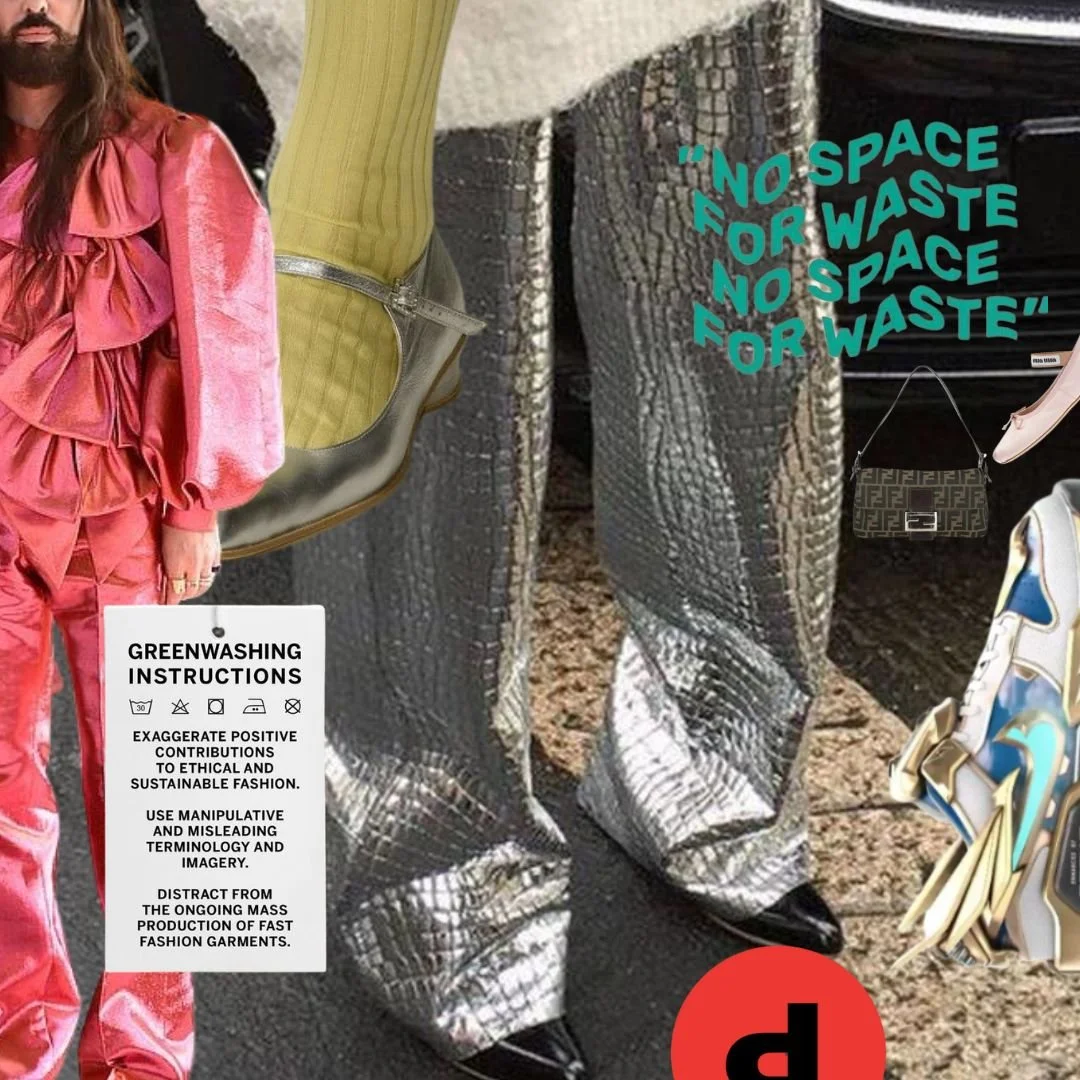The State of Fashion: condensed.
Last month, Mckinsey and The Business of Fashion released their annual report: The State of Fashion. Serving to provide a deep dive and exploration into the future of fashion for 2023, this report captures the vision of the most important trends that will shape the fashion industry over the coming year. We’ve delved into four of the key findings to take a more in-depth look into the report’s predictions.
Goodbye greenwashing?
Acknowledging and addressing the immense impact of the fast fashion industry is a must for brands in 2023. It’s no secret that the fashion industry is a vibrant contributor to global emissions, responsible for approximately ten per cent of global carbon emissions annually.
A quarter of consumers in the UK said their purchase decisions were driven by sustainability, reflecting a broader pattern across geographies, as well as elevating the importance of sustainability marketing for brands. Selfridges has already exemplified how sustainability can be seamlessly woven into the retail sphere, announcing its pledge that by 2030 nearly half of its sales should be from resale, repair, rental or refills.
Yet, whilst ‘sustainability’ is a term frequently used within the industry, with the frequency of the word quadrupling among online retailers in the US and UK in 2022, the ubiquity of this term has almost resulted in the motive behind this word being somewhat lost along the way.
This sentiment is reflected in a 2021 survey conducted by the biotech firm, Genomatica, where 42 per cent of the teenagers and adults polled said they were unsure about what makes clothing ‘sustainable’. Looking ahead to 2023, brands need to become more transparent about their supply chains and global footprint, whilst tightening up their definition of ‘sustainability’ more broadly.
Beyond the binary: fluidity in fashion
Fashion in 2023 needs to stretch beyond the binary of ‘male’ and ‘female.’ The blurring of such categories reflects evolving social and cultural attitudes towards gender and contemporary understandings of gender as a fluid spectrum rather than distinct categorisations.
Research within the state of fashion report undertaken by Klarna indicates that around 50 per cent of Gen-Z globally have purchased fashion outside of their gender identity and around 70 per cent of consumers more broadly have expressed a desire to buy gender-fluid fashion in the future. This attitude has frequently been captured on the red carpet, with celebrities such as Harry Styles and Jaden Smith showcasing their flare for fashion that stretches beyond stereotypical gender ‘norms.’
Harry Style’s in a Harris Reed piece for Vogue
As fashion is fundamentally a core tool for self-expression, introducing greater gender fluidity into collections and brand’s identities is a critical step that brands should adopt in the near future to keep up with these shifting consumer ideals.
The future is Gen-Z
Gen-Z - aged between 12 and 25 years old- is set to continue to play a powerful role in shaping the future of the fashion industry. This sector’s spending is set to grow three times faster than other generations until 2030, equating to a third of the market in total. Gen-Z aren’t frugal either. According to the BOF insights, Gen-Z consumers have an estimated purchasing power of 360 billion, emphasizing the sheer scale and strength that this generation plays in the modern retail landscape.
Not only this, fashion has been rated as the favourite entertainment category for Gen-Z er’s to splurge their savings on, reinforcing the golden opportunities brands can create if they draw in this audience. According to BOF, luxury brand Gucci has grasped how to do this, ranking second behind Nike as the most favoured brands amongst this demographic. With BOF Insights revealing that the majority of Gen-Zers aspire to buy more luxury clothing and accessories as they gain purchasing power, there is the capacity for brands to win big if they manage to draw in this audience.
Gucci-Dapper Dan Collection
The luxury fashion market remains strong amidst the recession
Even in the face of recessionary conditions and a predicted overall slowdown in growth for the fashion industry, the luxury market serves to remain resilient. The luxury market's consumer base is still broadening, with 400 million consumers in 2022, with this number is expected to reach 500 million by 2030. This growth is coupled with the expansion of the higher and top-end of the luxury market, which now accounts for some 40 per cent of the market value in 2022 compared with 35% last year.
It's important, however, to note that this growth is not linear across geographies, with European prospects of growth looking rather bleak, as inflation is set to stay high. Whilst in aggregate, McKinsey expects global fashion sales growth of 5 percent to 10 percent for luxury, the US and Middle East are predicted to be the most robust in comparison to other major economies. For fashion leaders, sharpened strategies are required to navigate this change.
A holistic overview
Much like COVID-19 created changing consumer spending patterns, the shifting ideals and geopolitical tensions tied to the coming year means that 2023 is set to be a tough 12 months. A staggering 56% of fashion executives expect conditions in the industry to worsen in the year ahead, with the threat of recession looming across multiple geographies. Retailers and brands will need to rise amidst these pressures to adapt to this new economic reality.



